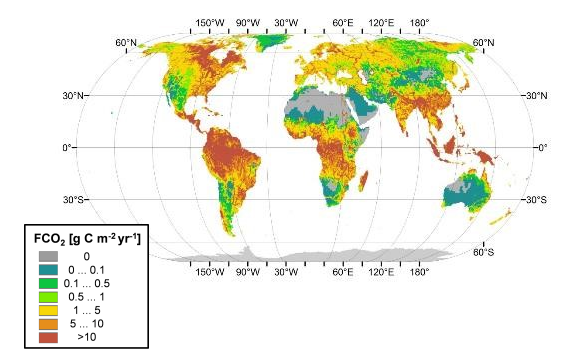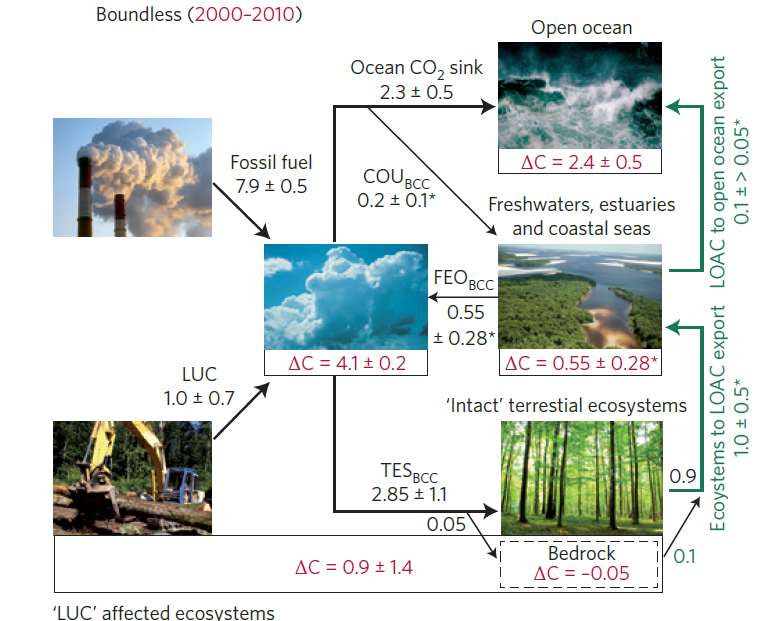Greenhouse gases emissions from inland waters
Greenhouse gas (GHG) emission from inland waters contributes substantially to the global radiative forcing of the Earth, and is likely to increase during the 21st century due to growing anthropogenic pressure. Due to the scarcity and poor spatial coverage of observations, global estimates of present-day inland water GHG emissions are still highly uncertain and the anthropogenic perturbation impacting these emissions cannot be quantified using empirical methods. The main aim of this research line is (1) to better constrain the present-day GHG fluxes ; (2) to quantify the anthropogenic perturbation of the inland water GHG budget ; and (3) to attribute changes to various direct and indirect anthropogenic drivers (land use change and application of fertilizers, sewage inputs, increased atmospheric N deposition, river damming, climate change, and increasing atmospheric CO2 concentrations).
These objectives are achieved by applying advanced statistical methods on existing datasets as well as regional and global-scale mechanistic models, including Earth System Models.
Relevant project(s): C-CASCADES, VERIFY
People involved: Adam Hastie, Céline Gommet, Ronny Lauerwald, Pierre Regnier


Left: CO2 emissions for the global inland water network (streams, rivers, lakes and reservoirs) at 0.5° resolution (modified from Lauerwald et al., 2015; Zscheischler et al., 2017).
Right: The anthropogenic CO2 budget, represented as perturbations of natural fluxes (in PgC yr-1), in presence of inland and coastal waters (from Regnier et al.,2013)